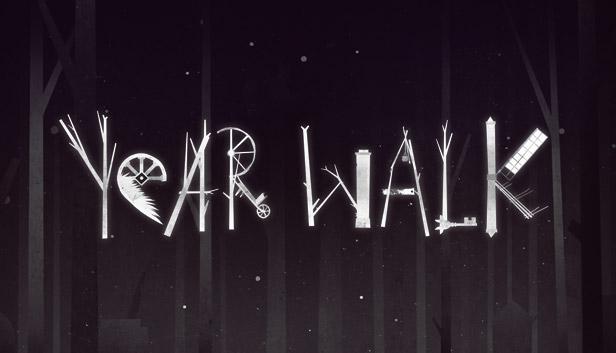For this critical play, I tried out Year Walk, a creepy mystery game made by a Swedish game developer Simogo. It is available on multiple platforms including iOS, Windows, and Steam. Since it has some horror elements and the game mechanics seem to assume some level of familiarity with game interaction and puzzle-solving skills, I think the target audience is probably at least late adolescents and up. Year Walk is a single player game with the objection of solution (solving the puzzles and piecing together the story) and perhaps a bit of exploration (exploring the eerie landscape and learning about the narrative). The main types of fun in the game includes challenge, narrative, and discovery.
In the game, players explore a snowy woodland, where various places hides clues and puzzles that help unlock a narrative about the protagonist and his lover. Starting from the beginning, the game does not have any instructions or tutorials. It is up to the player to find the windmill to reveal the beginning of the narrative from the protagonist’s lover. From there, the player apparently is set out on the Year Walk (though I thought this wasn’t very obvious). The player needs to solve a series of puzzles to finally receive the glimpse of the future promised by doing the Year Walk. I felt that the puzzles, while very creepy and suggesting various unknown background stories of their own, weren’t exactly the crucial part of the story between the protagonist and his love. But the experience builds up the narrative of a scary adventure that the protagonist goes through. In this sense, the narrative architecture of this game seems to be enacting stories. The game actually has a companion app that can be unlocked once you finish the Year Walk and using clues from the companion app, you can replay the game to uncover the real ending of the story. I didn’t have enough time to get this far, but I feel that this second part makes the whole game’s narrative element even stronger, and actually solves the ultimate mystery.
When a player starts playing the game, there are several locations available for them to access, but only one will actually reveal the narrative and kick off the game. Similarly, throughout the game, the landscape doesn’t expand, but do get updated with new details and interactions as the player solves the puzzles. I feel that this game mechanics makes the puzzles blend naturally into the mystery and the narrative, giving the player moments of realizations when a previously visited spot starts can be seen in a new light. This also has disadvantages though. I felt that it was a bit time consuming to remember which places I’ve visited (and found nothing) and the directions back to certain locations. I spent a lot of time wandering and revisiting places while I tapped and dragged everything trying to find something interactive which will lead me to a puzzle.
Overall, I found this game incredibly interesting, but rather hard for someone who isn’t used to playing mystery/puzzle games on phones. The learning curve is a bit steep and takes patience.



